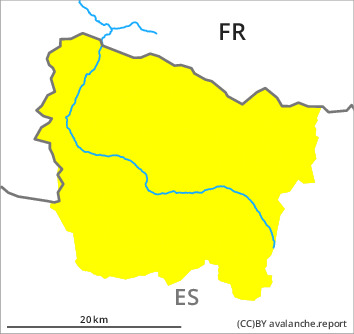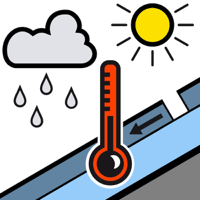
Danger level

2000m
Avalanche Problem

Wind slab

2000m


Wet snow

1500m


Fresh wind slabs require caution. Gliding avalanches and moist snow slides as the day progresses.
The cold fresh snow and in particular the wind slabs that are being formed by the moderate to strong northerly wind can be released easily, or, in isolated cases naturally in all aspects and at intermediate and high altitudes. This snow and in particular the mostly small wind slabs are poorly bonded with the old snowpack in particular on wind-protected shady slopes. By the early morning the wind slabs will increase in size moderately.
As the snowfall level rises more frequent gliding avalanches and moist snow slides are to be expected as the day progresses, but they will be mostly small. The avalanche prone locations are to be found in particular on very steep shady slopes below approximately 2500 m and on very steep grassy slopes above approximately 1500 m. Moist avalanches can be released by people or triggered naturally. Even a small avalanche can sweep people along and give rise to falls. Off-piste activities call for defensive route selection.
As the snowfall level rises more frequent gliding avalanches and moist snow slides are to be expected as the day progresses, but they will be mostly small. The avalanche prone locations are to be found in particular on very steep shady slopes below approximately 2500 m and on very steep grassy slopes above approximately 1500 m. Moist avalanches can be released by people or triggered naturally. Even a small avalanche can sweep people along and give rise to falls. Off-piste activities call for defensive route selection.
Snowpack
>
The snowpack is faceted and weak. The new snow and wind slabs are lying on the unfavourable surface of an old snowpack in particular on wind-protected shady slopes and above the tree line. Thursday: 5 cm of snow, and even more in some localities, will fall until the early morning above approximately 1800 m. The sometimes strong wind will transport the new snow and, in some cases, old snow as well. Some rain will fall from the afternoon. The rain will give rise to increasing moistening of the snowpack below approximately 2500 m. At high altitude there are 30 to 50 cm of snow. In all regions snow depths vary greatly, depending on the infuence of the wind.
Tendency
Friday: Gradual decrease in danger of dry and moist avalanches as the precipitation eases.